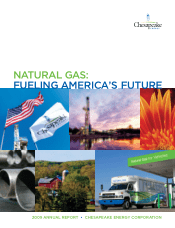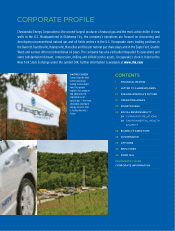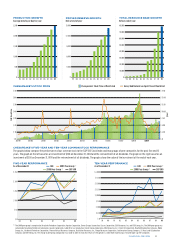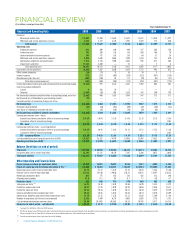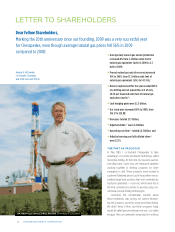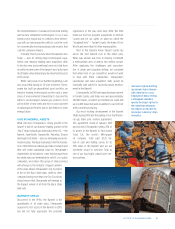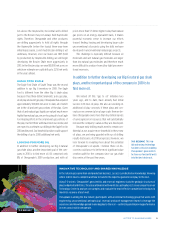Chesapeake Energy 2009 Annual Report Download - page 8
Download and view the complete annual report
Please find page 8 of the 2009 Chesapeake Energy annual report below. You can navigate through the pages in the report by either clicking on the pages listed below, or by using the keyword search tool below to find specific information within the annual report.
6 CHESAPEAKE ENERGY CORPORATION
The Haynesville Shale in Northwest Louisiana and East Texas
is the shale play of which we are most proud because it was
discovered by Chesapeake’s own geoscientists and engineers.
GRANITE WASH
High-volume natural gas with
a bonus of oil and natural gas
liquids give the Granite Wash
outstanding returns.
BARNETT SHALE
The massive Barnett in north-
central Texas is the granddaddy
of all natural gas shale plays.
FAYETTEVILLE SHALE
Scenic central Arkansas
is home to the prolific
Fayetteville Shale.
MARCELLUS SHALE
Deep beneath northern
Appalachia, Marcellus Shale
natural gas will revitalize
the region.
HAYNESVILLE SHALE
Chesapeake’s discovery of the
Haynesville makes the play’s
success even sweeter.
GRANITE WASH
play of which we are most proud because it was
discovered by Chesapeake’s own geoscientists and
engineers. We began our geoscientific investigation
of the Haynesville in 2005–06 and tested our theo-
ries through drilling in 2007. In 2008, we formed an
innovative joint venture with our well-respected
industry partner, Houston-based Plains Exploration
& Production Company, to which we sold 20% of
our Haynesville assets for $3.2 billion in cash and
drilling carries.
The Haynesville Shale is now the nation’s second-
largest producing shale play. It is so large (more than
twice the size of the Barnett core area) and so over-
pressured (holding more gas in place per square mile
than the Barnett) that we believe it will likely surpass
the Barnett by 2014 to become the largest natural
gas producing field in the U.S. Ultimate recoveries
from the Haynesville could exceed 250 tcfe, making it
potentially one of the five largest natural gas fields in
the world. Today, we are producing from more than
200 net wells in the Haynesville on our 520,000 net
leasehold acres and estimate we could drill up to
6,500 additional net wells in the years ahead.
FAYETTEVILLE SHALE
The Fayetteville Shale of central Arkansas emerged
as the second important U.S. shale play in early 2005.
Chesapeake had already developed a presence in the
Woodford Shale of southeastern Oklahoma in 2004,
so when we learned in 2005 of initial success in the
Fayetteville, we aggressively jumped into Arkansas,
acquiring approximately 550,000 net acres of prime
Fayetteville acreage by mid-year 2008. Our drill-
ing success came quickly in the Fayetteville as our
knowledge of shale development from the Barnett
and Woodford plays helped establish Chesapeake as
the second-largest player in the Fayetteville.
A key to Chesapeake’s Fayetteville success has
been our September 2008 joint venture with London-
based BP, the world’s second-largest oil company.
In this joint venture, we sold 25% of our
assets in the Fayetteville to BP for $1.9
billion in cash and drilling carries. To-
day, we are producing from more than
500 net wells in the Fayetteville on our
460,000 net acres and estimate we could
drill up to 5,200 additional net wells in
the years ahead.
HAYNESVILLE SHALE
The Haynesville Shale in Northwest
Louisiana and East Texas is the shale
BARNETT SHALE MARCELLUS SHALEFAYETTEVILLE SHALE

